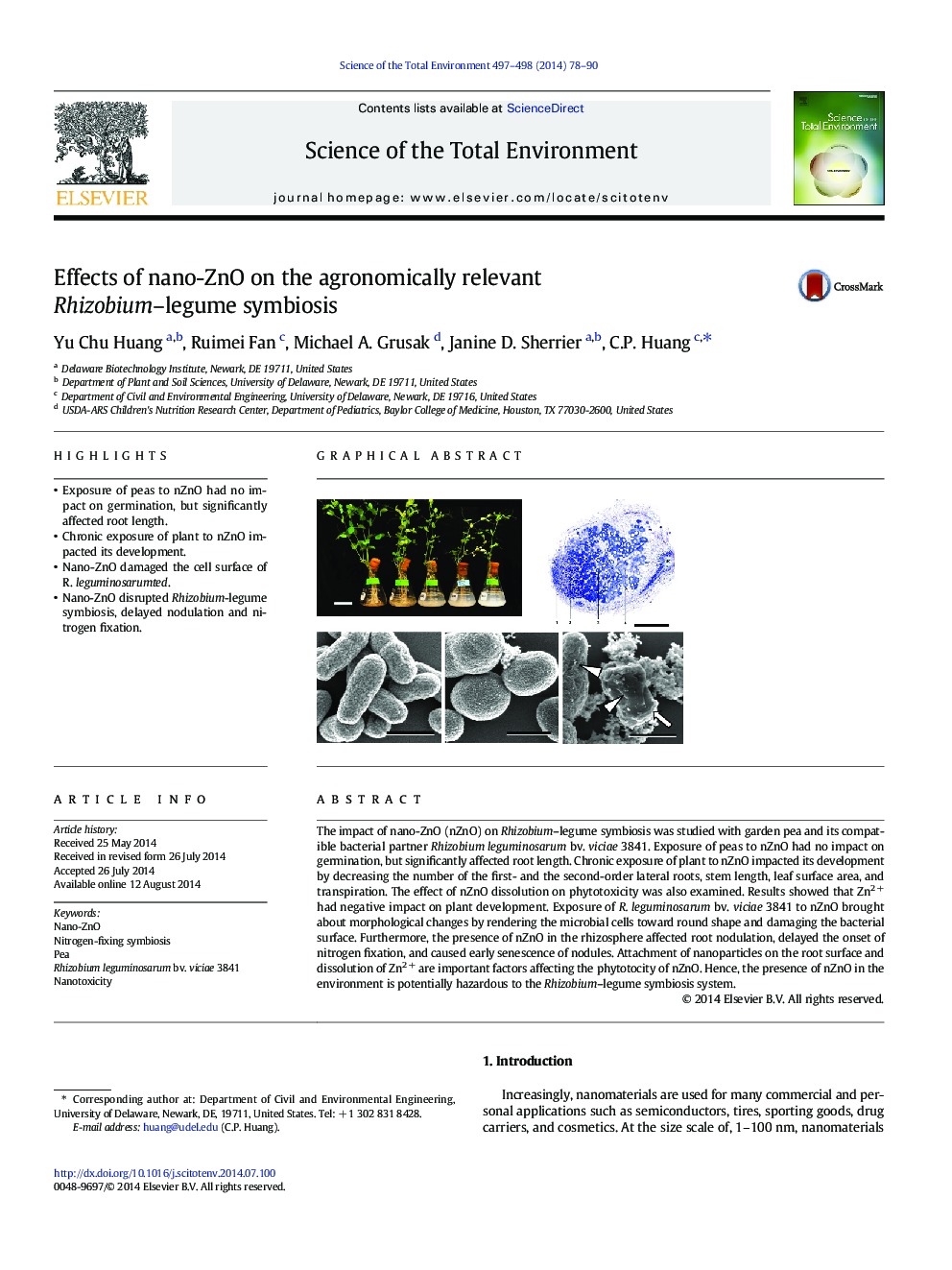| کد مقاله | کد نشریه | سال انتشار | مقاله انگلیسی | نسخه تمام متن |
|---|---|---|---|---|
| 6328612 | 1619775 | 2014 | 13 صفحه PDF | دانلود رایگان |
- Exposure of peas to nZnO had no impact on germination, but significantly affected root length.
- Chronic exposure of plant to nZnO impacted its development.
- Nano-ZnO damaged the cell surface of R. leguminosarumted.
- Nano-ZnO disrupted Rhizobium-legume symbiosis, delayed nodulation and nitrogen fixation.
The impact of nano-ZnO (nZnO) on Rhizobium-legume symbiosis was studied with garden pea and its compatible bacterial partner Rhizobium leguminosarum bv. viciae 3841. Exposure of peas to nZnO had no impact on germination, but significantly affected root length. Chronic exposure of plant to nZnO impacted its development by decreasing the number of the first- and the second-order lateral roots, stem length, leaf surface area, and transpiration. The effect of nZnO dissolution on phytotoxicity was also examined. Results showed that Zn2Â + had negative impact on plant development. Exposure of R. leguminosarum bv. viciae 3841 to nZnO brought about morphological changes by rendering the microbial cells toward round shape and damaging the bacterial surface. Furthermore, the presence of nZnO in the rhizosphere affected root nodulation, delayed the onset of nitrogen fixation, and caused early senescence of nodules. Attachment of nanoparticles on the root surface and dissolution of Zn2Â + are important factors affecting the phytotocity of nZnO. Hence, the presence of nZnO in the environment is potentially hazardous to the Rhizobium-legume symbiosis system.
336
Journal: Science of The Total Environment - Volumes 497â498, 1 November 2014, Pages 78-90
